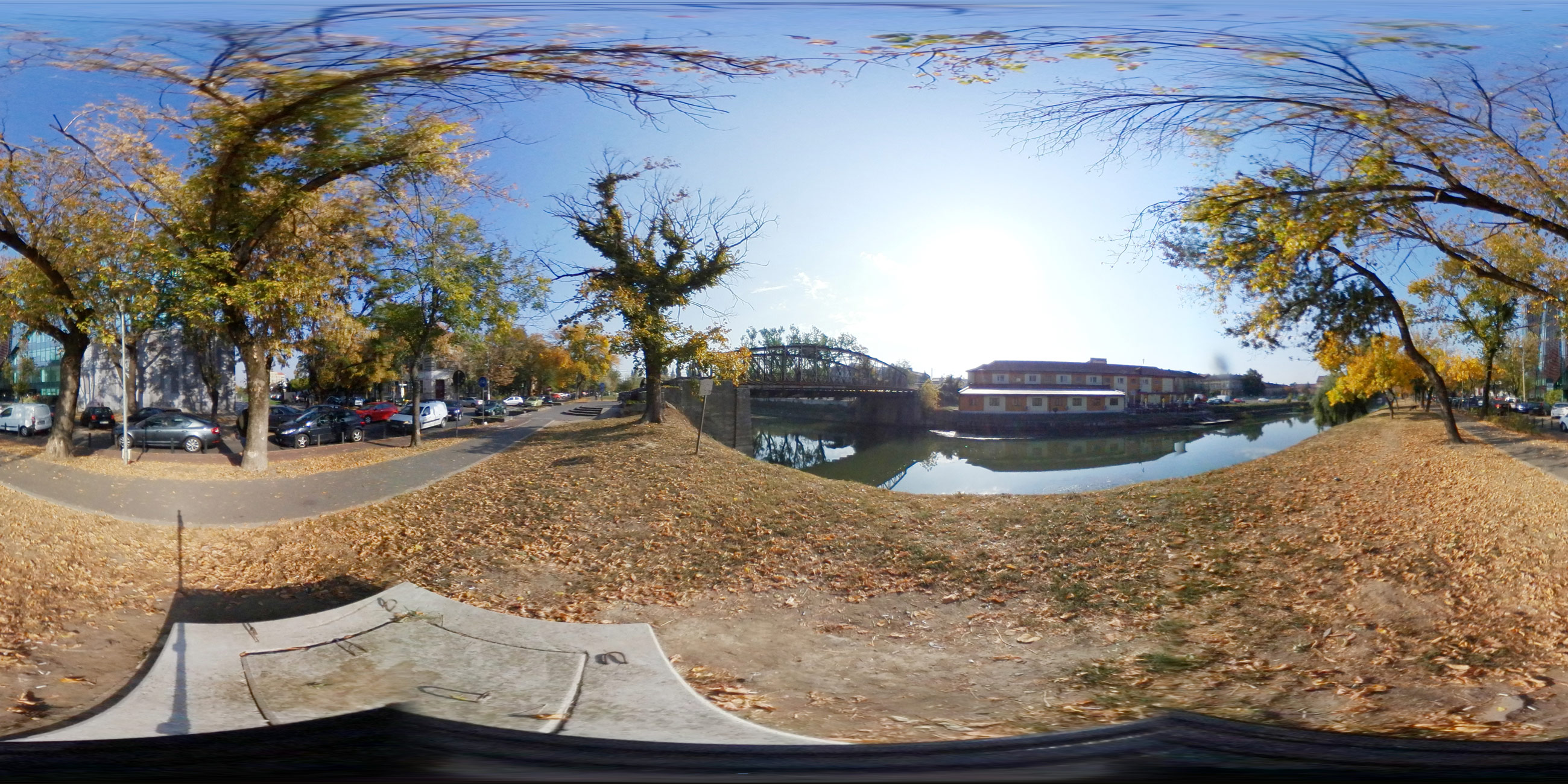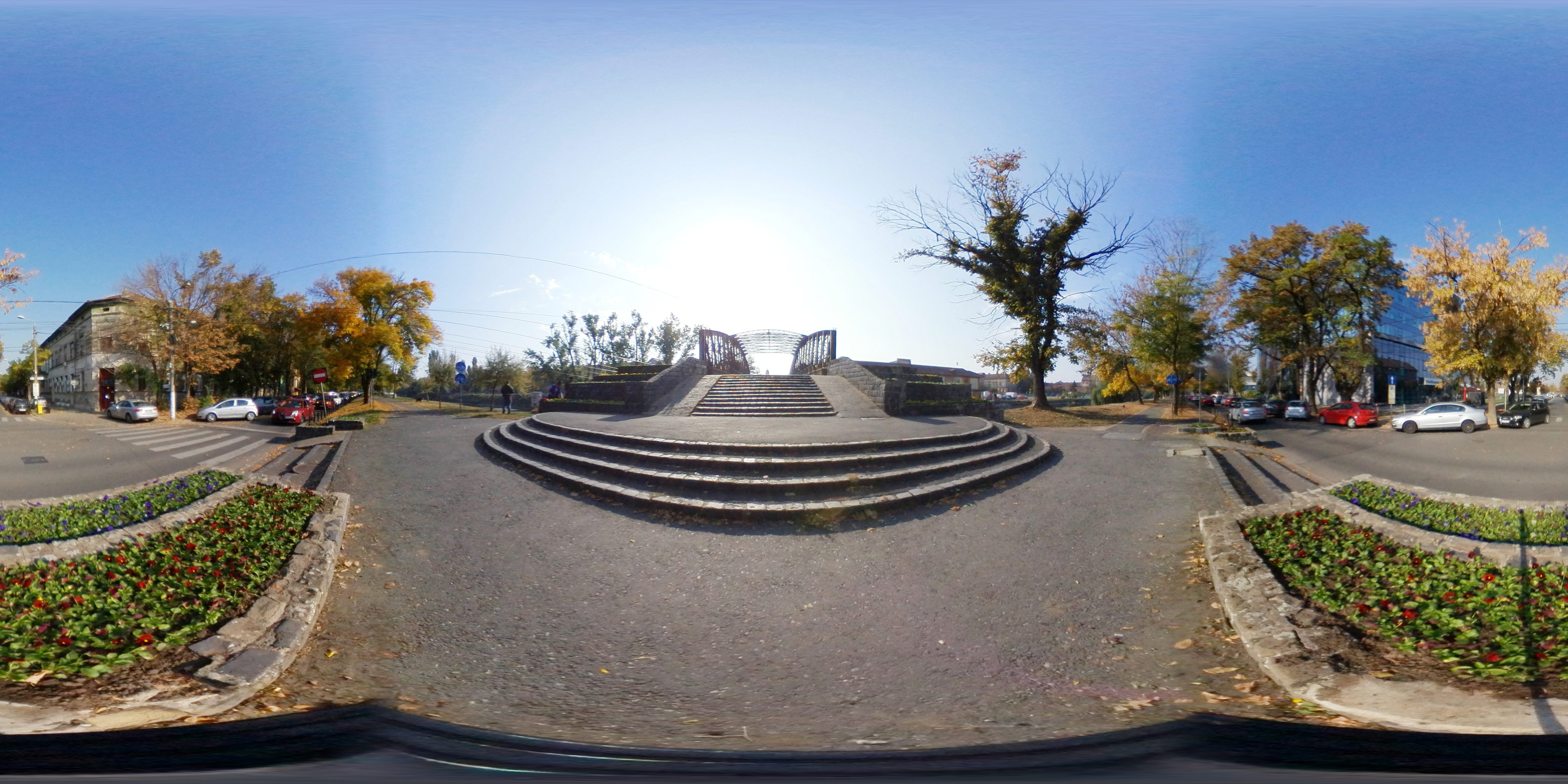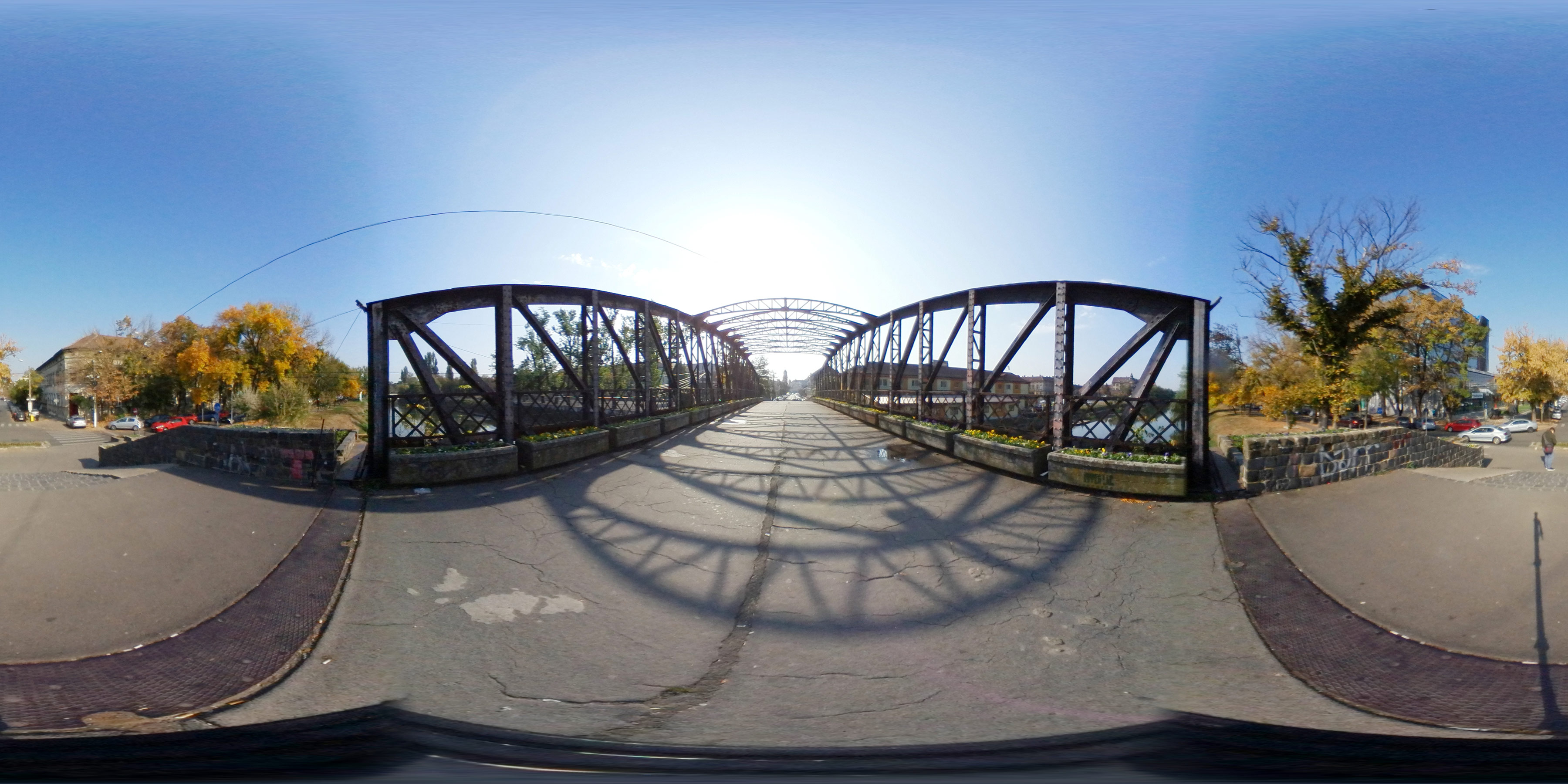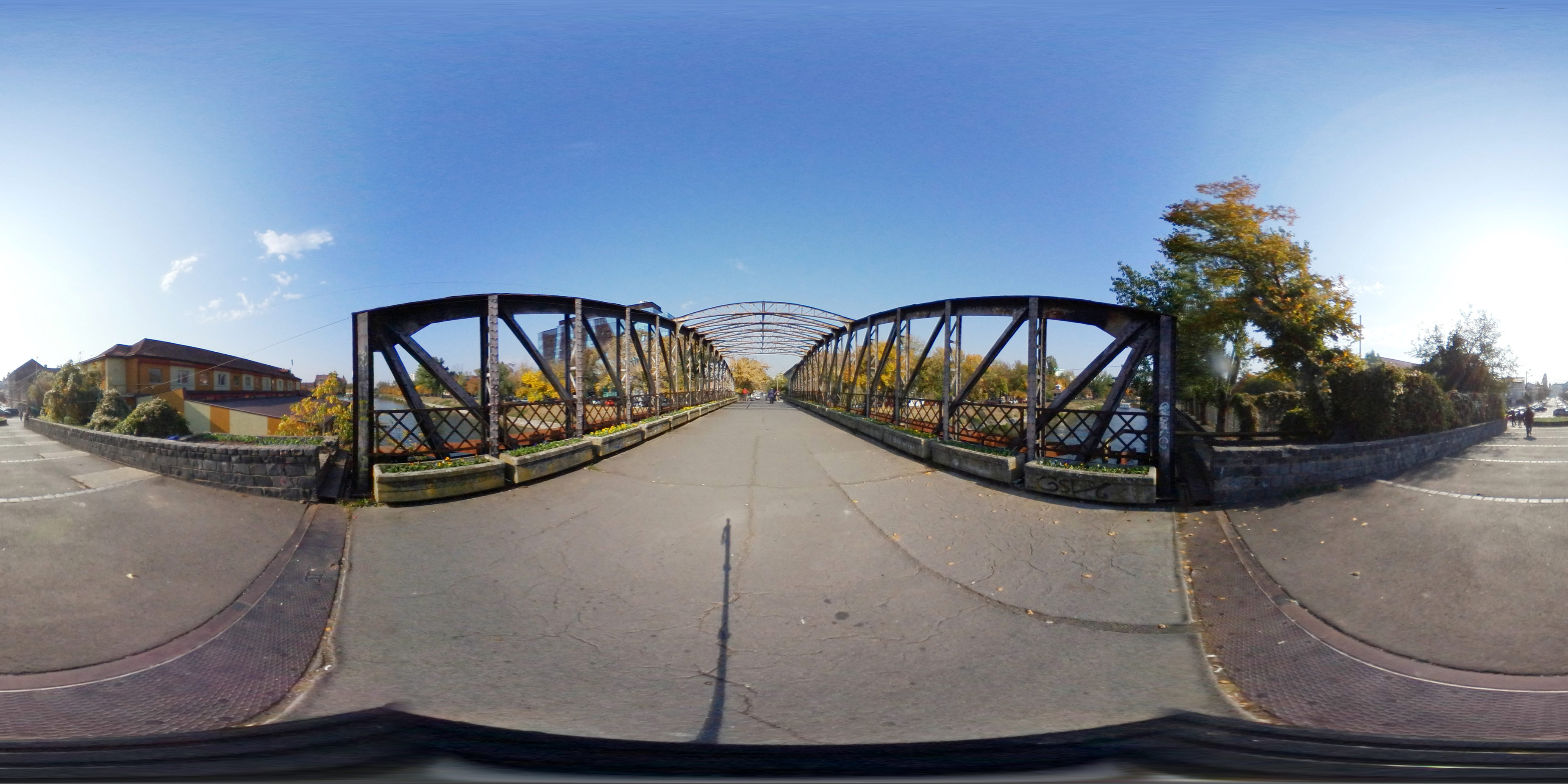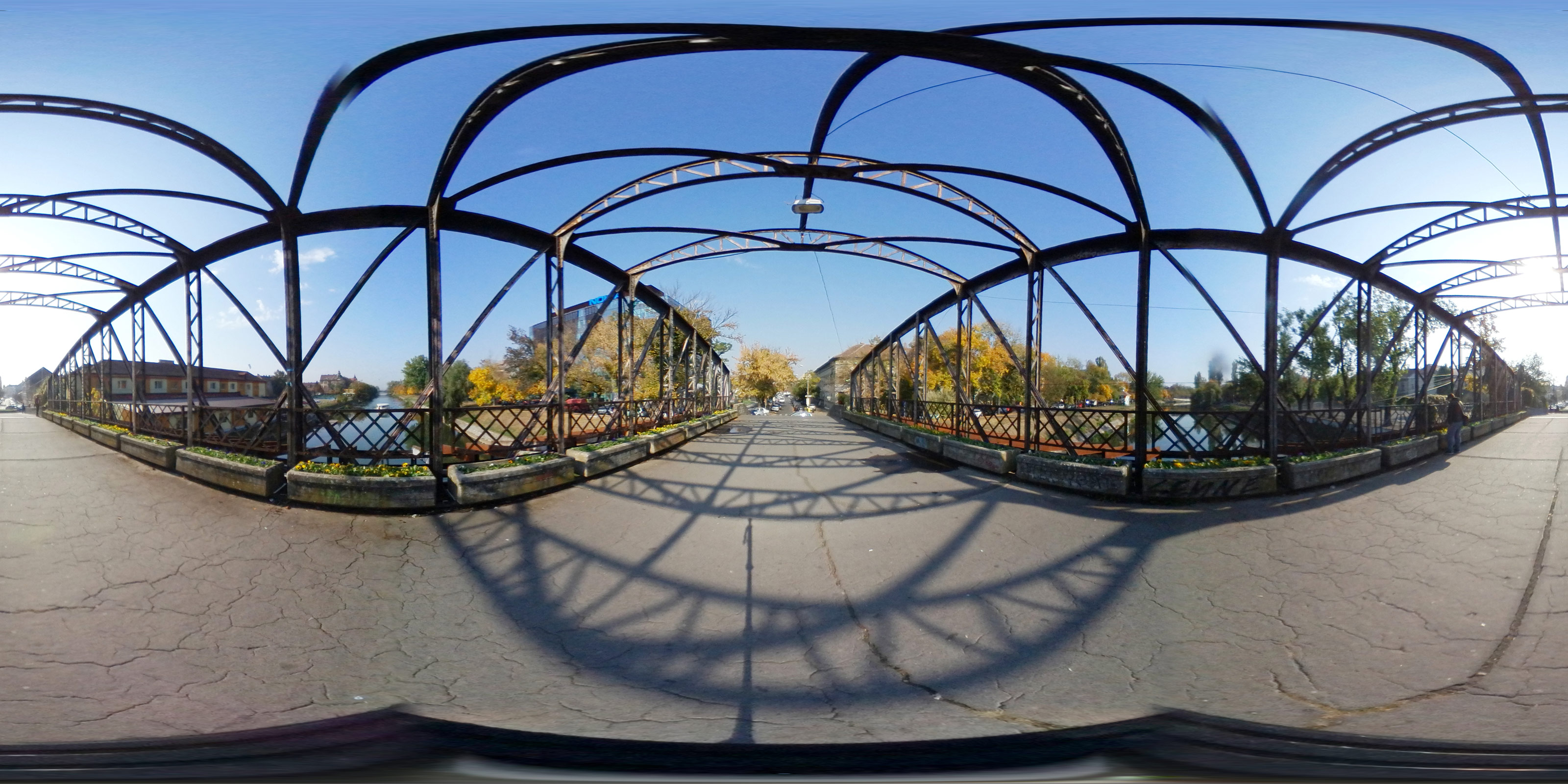Andrei Muresanu street
The Iron Bridge was originally built in 1871 in place of the current Traian Bridge, located between the Cetate and Iosefin-Elisabetin neighborhoods. It was then dismantled in 1915 and replaced in 1916 on the same current site, also in the Iosefin district.
Listen to the audio version.
It was built in 1871 on the site of the current Traian bridge between the Cetate and Iosefin-Elisabetin neighborhoods, dismantled in 1915 and re-installed in 1916 on the current site between Ady Endre Street and Andrei Mureşanu Street.
According to the the legends of the city, this bridge would have been designed by the famous engineer Gustave Eiffel. . In fact, the engineer Lád Károly from the Technical Service of the City Hall of the Royal Free City of Timisoara designed the bridge infrastructure and the Bridge Factory in Reșița belonging to the Austro-Hungarian Railway Society executed the metal superstructure. The city hall of the free royal city of Timisoara coordinated the execution of the foundations and some elements at the ends of the bridge, the date of October 31, 1914, marking the completion of these operations.
The bridge also worked for vehicles for 44 years on the old site, after 1916 being installed only as a pedestrian bridge in the new site. It is currently part of The City and Water Tour. The Bega canal shores, organized by the crew from the Architectural Tour.
Listen to the audio version.
The Iron Bridge in Iosefin
Liana Maria Gombosoiu, Valeria Dr. Pintea. A family novel. Marineasa Publishing House, Timişoara, 2013, p. 155-156
Undoubtedly, we were very ridiculous and weird, crossing the entire Iosefin district, Lerică dressed in Tyrolese short leather trousers, with his endless feet in sandals with rope soles, in fashion by then, and, on his head, with an old colonial cap found in the attic. The boy tried to walk slower, for me to keep the rhythm. I was almost running, always behind him, thin, two slight tresses on my head, a discolored dress made from my mother’s ancient dresses from before the war, and the same type of rope sole sandals.
We crossed Gojdu street, reached the Bega, on Tudor Vladimirescu road. We crossed an iron bridge, reached the other shore, where the road was called Müller Guttenbrun and headed gloriously downwards the Bega, towards Freidorf. The railway station was on our right, and we heard the trains coming from Jimbolia or heading towards that city on the frontier. The sound of the locomotives was heard in those less and less frequented places. The streets were rarer, the houses few. Gardens, workhouses, chimneys of small factories were present here and there. The effervescence from the dock of the Bega did not last long, and the boats descended at great intervals. There, not far from the pumping station, Lerică had found a place covered by huge grass and reed, close to the water, a place hidden to the sight where he had built what he called a cottage of the Indians in the Cordilliera of the Andes. It was a construction made of dry branches and an old mat, very gloomy, with all sorts of sticks and hanging bags with flowers of lime tree and mint, still giving a rather powerful scent. Lerică also had in his cottage a worn raincoat and a whistle. On the edge of this exotic shelter, the boy had brought a flat boulder on which he sat and read, he pressed flowers gathered from the water shore, did experiments on insects and frogs, mainly watching their behavior and writing it down in a notebook. He would have loved to be part of Darwin’s expedition on the Beagle. Or to have accompanied Humboldt in the tropical forest, which was, according to the description of the scientist “Wald über dem Wilde”, forest above forest; could I ever be able to imagine such thing? I tried to. Lerică told me about lianas, canaguche palm trees, he amazed me with everything he knew about the faraway lands for which he was preparing. He did not fear neither the length of his future travels, nor the dangers. “In life, you have to take risks”, he told me looking dreamily towards the lazy watercourse of the Bega.
Timisoara, a fairytale place
by Matei Popa, 7th grade
"Grigore Moisil" Theoretical High School Timișoara
In the pages of history, Timisoara writes its own story,
With words that remain vivid and meaningful.
On its cobbled streets walk the shadows of the past,
And the echoes of heroes can be heard in every corner and in every stone.
On the outskirts of the city, in chestnut and acacia woods,
They say there are still sighs of love and unfulfilled longings.
Love stories grow under the starry sky on the banks of the Bega,
And old legends handed down from generation to generation, like the wind caressing the leaves of old trees.
In Union Square, the heart of the city beats faster,
Among buildings and fountains shimmering in the moonlight.
Political meetings and plots take place here,
And they say that every stone holds a secret waiting to be revealed.
The narrow streets of the Citadel hide mysteries and mysteries,
And every corner has a story waiting to be discovered.
With every step, you feel like you're stepping into another era,
And you can hear the sighs of yesteryear and the laughter of children running through the old streets.
Revolutionary stories and ideas are born in bohemian cafés,
Where poets and intellectuals find refuge in words and thoughts.
At a coffee table or under gas lamps,
It sparks heated discussions and plans that will change the course of history.
On the outskirts of the city, in suburbs and suburban neighborhoods,
Stories of life and struggle for survival emerge.
Every house and courtyard has a story,
And everyone is proud of their ancestral traditions and customs.
On the border between past and present, Timisoara is building its future,
With confidence and determination, overcoming obstacles as they arise.
Every day, a new page is written in the book of his destiny,
And each inhabitant adds their personal story to the city's rich tapestry.
In the Central Park, under the shade of ancient trees,
Stories of friendship and love, joy and sadness unfold.
Every bench and alley hides memories and stories,
And every visitor adds a new chapter to the park's beautiful book.
On the border between reality and fantasy, Timisoara becomes a magical place,
Where fabulous characters meet mythical creatures.
Fairytale scenes unfold in the narrow streets and crowded squares,
And every inhabitant becomes part of a story that transcends the boundaries of reality.
At the crossroads of cultures and traditions, Timisoara becomes a melting pot of diversity,
Where customs and rituals from all corners of the world intertwine.
Every festival and holiday celebrates unity in diversity,
And everyone feels proud to be part of this multicultural city.
On the outskirts and in the heart of the city, nature shows its splendor,
In gardens and parks that stretch on forever.
Every tree and flower tells its story,
And every river and lake becomes a testament to the beauty of the city.
Through the passing years and the changes that come with them,
Timisoara remains a place full of charm and mystery.
In the hearts of the inhabitants and in their ancestral memories,
It keeps alive the flame that ignites the spirit of the city and gives it life.
At the end of the journey through Timișoara's Stories,
I turn wistfully to the city in front of me.
With a heart full of memories and a soul enriched by experiences,
I am slowly drifting away from this place of stories and magic.
With the promise that I will come back one day to discover new stories,
I leave with a light step and a smile on my lips, because I know that this city,
With all its stories, it will always be alive and vibrant,
A place where history intertwines with the present, and the future always shines in the distance.
At the crossroads, I reach up to the sky and say one last thought,
Thanking Timisoara for its beauty and wonderful stories.
With a heart full of gratitude and the desire to return,
I am leaving for new adventures, but with the promise that the memories of Timisoara will always remain alive in my soul.
–-
